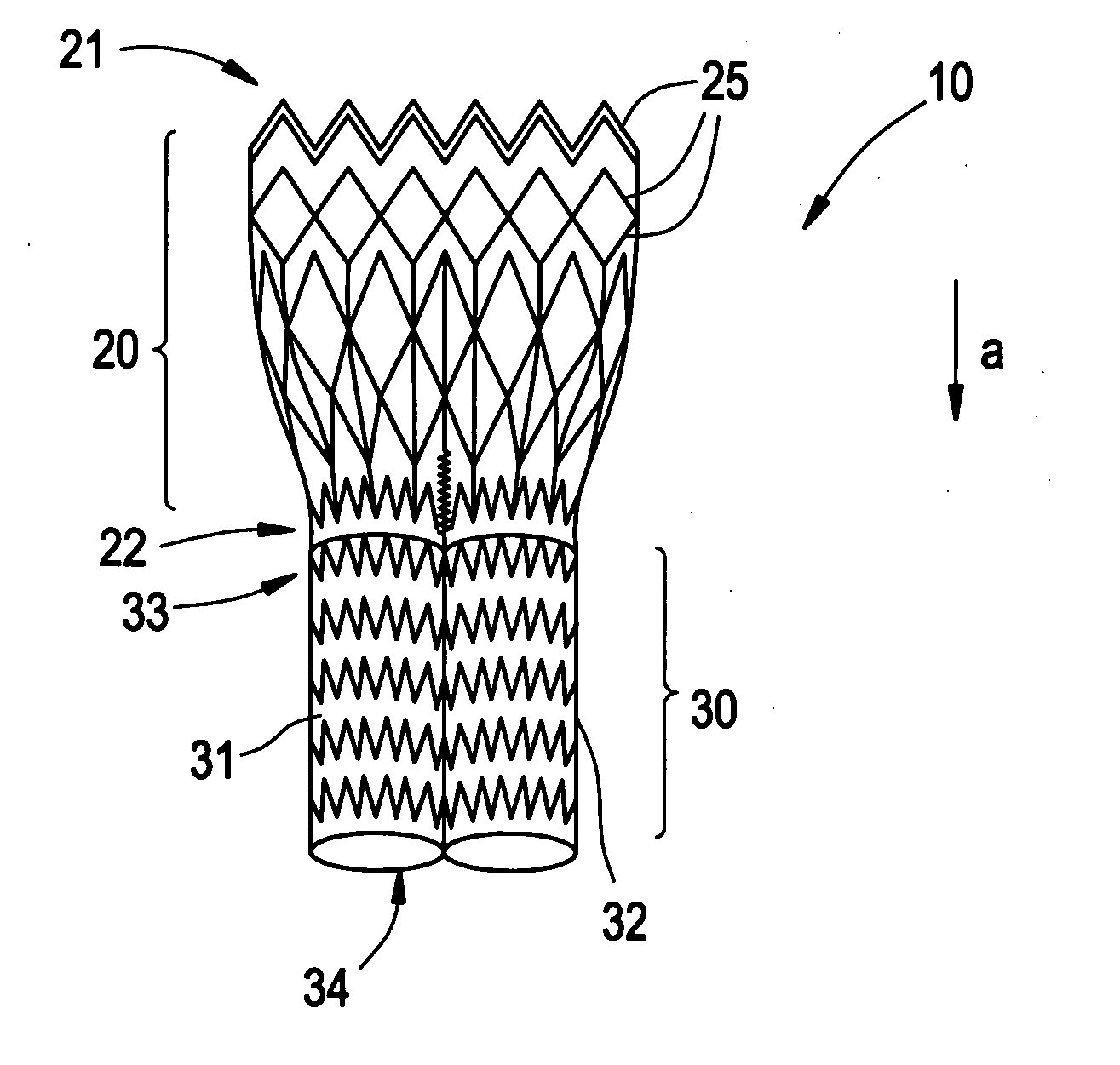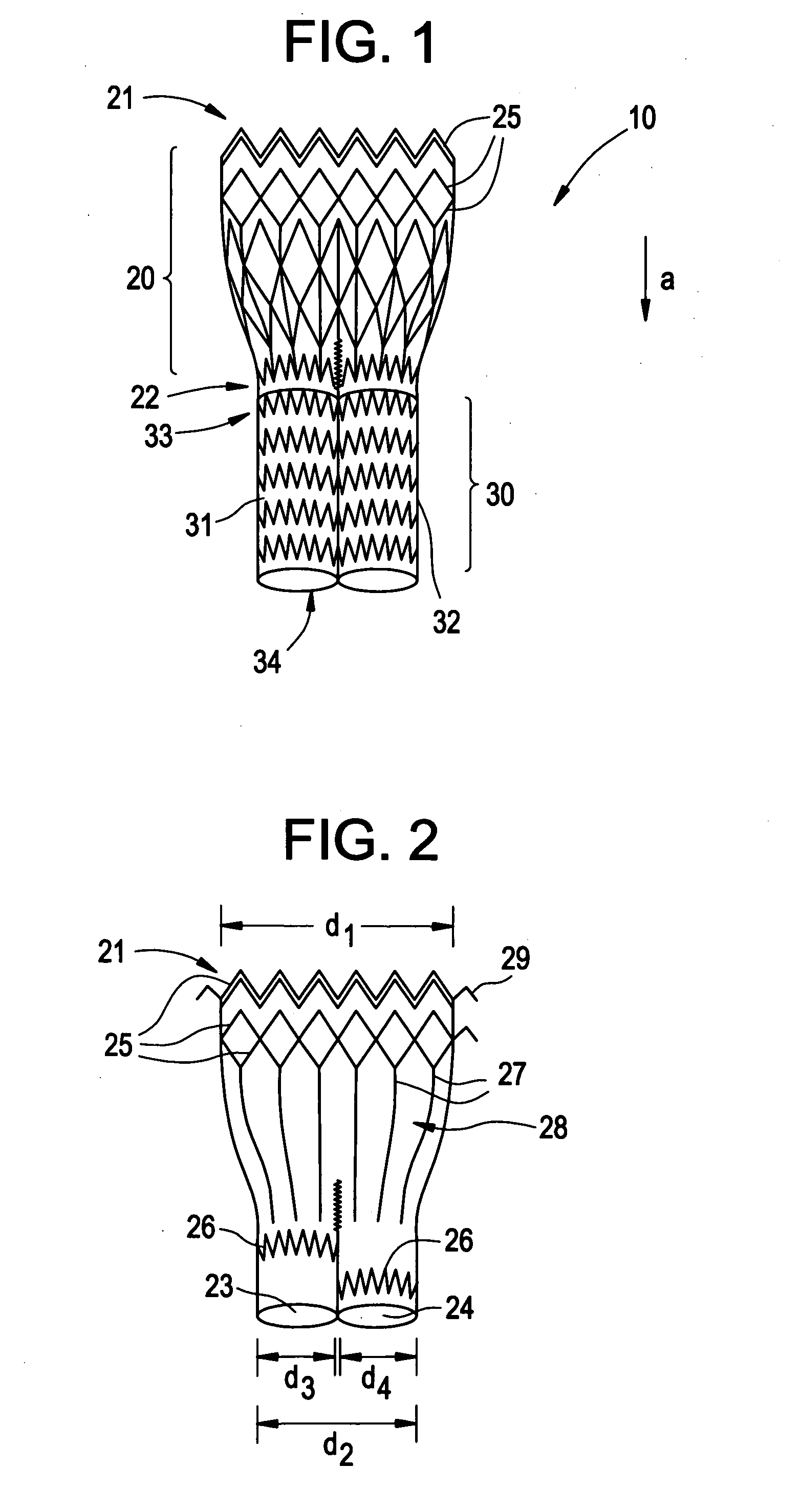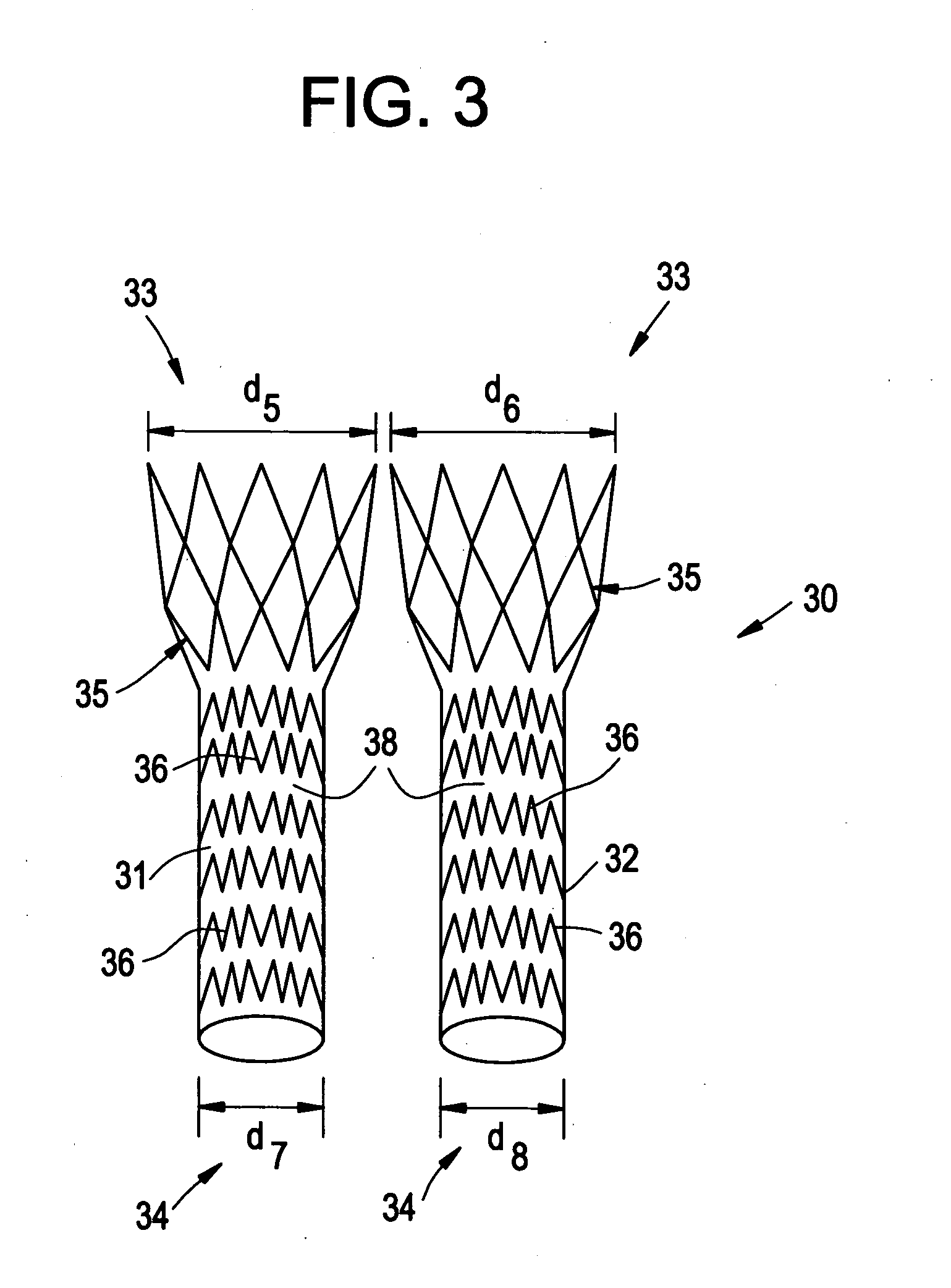Intraluminal stent graft
a stent and stent technology, applied in the field of intraluminal stent graft, can solve the problems of long recovery period of up to many months, obvious risks of surgery, and extended hospital stays, and achieve the effect of minimizing the delivery profile minimizing endoleaks and migrations of the stent gra
- Summary
- Abstract
- Description
- Claims
- Application Information
AI Technical Summary
Benefits of technology
Problems solved by technology
Method used
Image
Examples
Embodiment Construction
[0022]FIG. 1 illustrates an assembled view of an embodiment of a modular intraluminal stent graft 10 according to the description herein. The modular intraluminal stent graft 10 comprises an expandable primary section 20 and an expandable secondary section 30. Each of the primary section 20 and the secondary section 30 expands from a crimped state, for delivery thereof to an intended treatment site, to an expanded state when deployed. The expanded state is shown in FIG. 1. In the crimped state, the modular intraluminal stent graft 10 ideally minimizes a delivery profile thereof to enable delivery via a conventional 12 F-15 F delivery catheter system, for example. Minimizing the number of radially expandable stent segments within the primary section 20 helps to achieve the lower profiled delivery status of the modular intraluminal stent graft 10. The materials used to comprise the expandable portions of the intraluminal stent graft 10 described herein are preferably self-expandable m...
PUM
 Login to View More
Login to View More Abstract
Description
Claims
Application Information
 Login to View More
Login to View More - R&D
- Intellectual Property
- Life Sciences
- Materials
- Tech Scout
- Unparalleled Data Quality
- Higher Quality Content
- 60% Fewer Hallucinations
Browse by: Latest US Patents, China's latest patents, Technical Efficacy Thesaurus, Application Domain, Technology Topic, Popular Technical Reports.
© 2025 PatSnap. All rights reserved.Legal|Privacy policy|Modern Slavery Act Transparency Statement|Sitemap|About US| Contact US: help@patsnap.com



